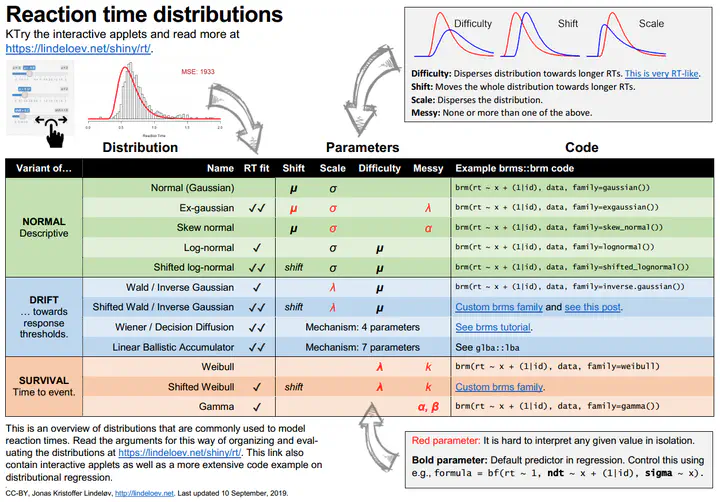How to correctly analyze reaction time (RT) data
Most researchers use the normal distribution to model reaction times, but it’s wrong! Discover how to perform a good analysis of RT data.
 “Reaction time distributions: an interactive overview” by Jonas K. Lindeløv
“Reaction time distributions: an interactive overview” by Jonas K. Lindeløv
This is a very, very important topic given the widespread usage of reaction times in psychology. Most of the time, we analyze it as a regular variable, using traditional models such as linear models, ANOVAs etc. The problem is that these models assume that the RT is normally distributed, which is false.
This leads us to adjustements like outliers removal or log-transformation, distorting the data because of our non-appropriate models.
The good news is, it’s very easy to use better models, that account for the non-normal distribution of RT. And these alternatives are beautifully presented by Jonas K. Lindeløv in the guide below:
👉 Reaction time distributions: an interactive overview 👈
It is a must-read for all psychologist. Do check-it out!!
Thanks for reading! Do not hesitate to tweet and share this post, and leave a comment below 🤗
🐦 And don’t forget to join me on X @Dom_Makowski